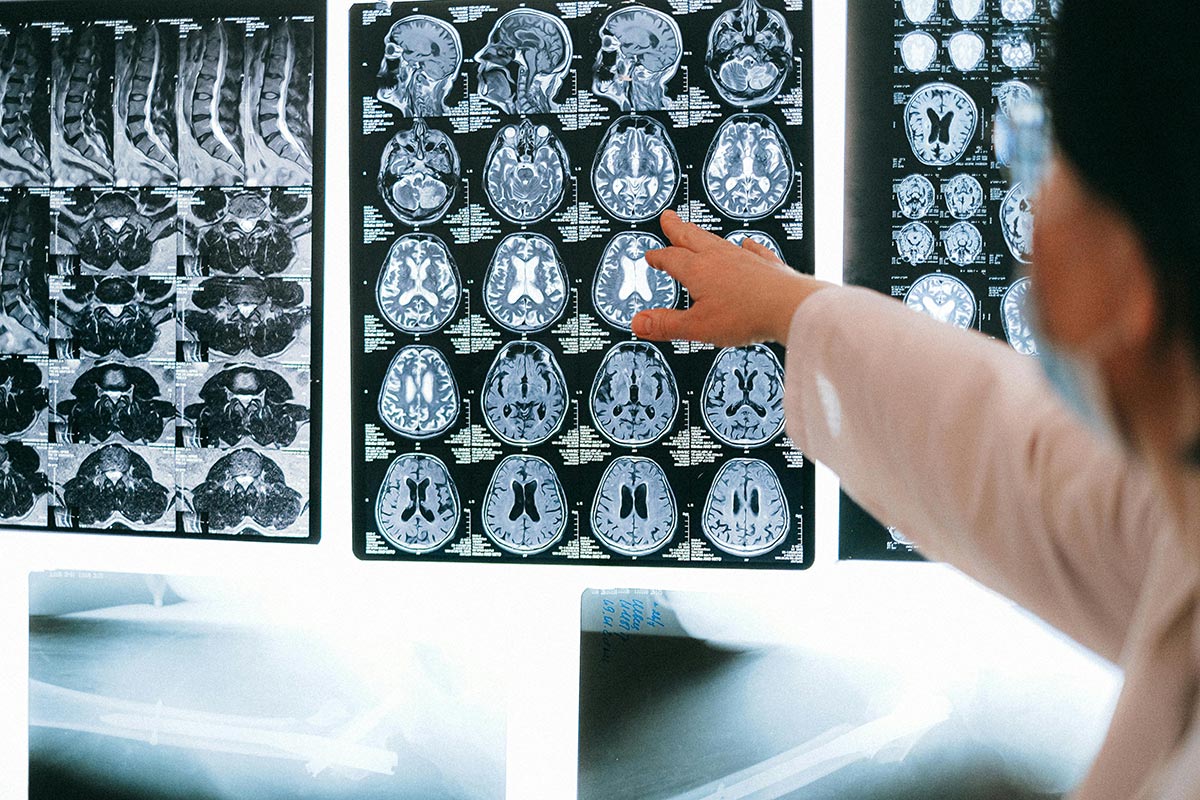
Managing Chronic Pain
Chronic pain represents a major health challenge for millions of individuals, impacting various aspects of life. Understanding the nature of chronic pain and its economic effects can provide important insights into how to address it effectively, especially without relying on opioids during recovery.
Understanding Chronic Pain
Chronic pain is defined as pain that persists for longer than three months, affecting approximately 100 million people in the United States [1]. This condition can arise from various sources, including injuries, surgeries, or chronic illnesses. For many, chronic pain leads to impaired physical functioning and a reduced quality of life.
Approximately one in five U.S. adults experienced chronic pain in 2019. These statistics underlie the fact that chronic pain is tied not only to physical suffering but also to emotional and psychological challenges. Effective pain management strategies are critical, especially in individuals with a history of substance use disorders, as managing pain can raise complex clinical and ethical issues that may hinder recovery efforts [2].
| Aspect of Chronic Pain | Statistics |
|---|---|
| Affected Individuals | ~100 million in the U.S. |
| Chronic Pain Prevalence | 1 in 5 adults in 2019 |
| Economic Burden | >$100 billion per year |
Economic Effects of Chronic Pain
The economic implications of chronic pain are profound. Chronic pain results in significant direct healthcare costs and lost productivity, leading to an overall economic strain that exceeds $100 billion annually in the United States [2]. This encompasses not only the expenses related to treatment and medication but also the indirect costs due to reduced work capacity and lower quality of life.
Employers and health systems bear the financial burden through increased healthcare premiums and decreased employee productivity. As such, finding effective methods to manage chronic pain without opioids is critical for not just the individuals experiencing it but also for the broader economy.
Understanding the complexities of addressing chronic pain without opioids in recovery is vital. For individuals seeking alternative pain management strategies, exploring various therapies and support systems can enhance their quality of life and facilitate recovery. To learn more about coping techniques, visit our articles on developing coping skills for addiction recovery and the importance of self-care in substance use treatment.
Alternatives to Opioids
In addressing chronic pain without opioids, various nonopioid medications and interventional procedures can be effective alternatives. Exploring these options can provide individuals in recovery with viable solutions to manage their pain while minimizing the risks associated with opioid use.
Nonopioid Medications
Several nonopioid medications are commonly used for managing chronic pain. These include nonsteroidal anti-inflammatory drugs (NSAIDs), acetaminophen, antidepressants, anticonvulsants, and muscle relaxants. A tailored approach is essential for optimizing pain relief while mitigating the risks of opioid dependency [1]. Below is a table summarizing these medications and their uses:
| Medication Type | Examples | Common Uses |
|---|---|---|
| NSAIDs | Ibuprofen, Naproxen | Reducing inflammation and pain |
| Acetaminophen | Tylenol | General pain relief |
| Antidepressants | Duloxetine, Amitriptyline | Chronic pain management and mood |
| Anticonvulsants | Gabapentin, Pregabalin | Nerve pain and neuropathic pain |
| Muscle Relaxants | Cyclobenzaprine, Carisoprodol | Muscle spasms and acute pain relief |
A multimodal strategy that includes these nonopioid options can help individuals manage their pain effectively while remaining in recovery.
Interventional Procedures
Interventional procedures can also play a significant role in managing chronic pain without relying on opioids. These treatments are often tailored to the individual's specific condition and can provide significant relief. Common interventional procedures include:
- Joint Injections: These involve the injection of corticosteroids or anesthetic directly into a joint to reduce inflammation and pain.
- Nerve Blocks: This procedure targets specific nerves to interrupt pain transmission, providing symptom relief.
- Trigger Point Injections: Injections directly into tight muscle areas help alleviate muscle pain.
- Epidural Steroid Injections: Administered into the epidural space, these can relieve pain and inflammation in the spinal column.
- Radiofrequency Ablation: This technique uses heat to disrupt nerve function, leading to long-term pain relief.
- Spinal Cord Stimulation: A device is implanted to deliver electrical impulses to the spinal cord, helping to manage pain perception.
Summary of Interventional Options
| Procedure | Description | Typical Uses |
|---|---|---|
| Joint Injections | Injection of medication into a joint | Arthritis pain, joint pain |
| Nerve Blocks | Interrupts pain transmission | Chronic pain syndromes |
| Trigger Point Injections | Targets muscle knots with anesthetic | Myofascial pain |
| Epidural Steroid Injections | Steroids injected into the spine for relief | Sciatica, back pain |
| Radiofrequency Ablation | Disrupts nerve function using heat | Chronic back pain |
| Spinal Cord Stimulation | Electrical impulses to the spinal cord | Intractable pain |
These alternatives provide individuals with chronic pain the option to explore effective treatment strategies while minimizing the risks associated with opioid use. Implementing a comprehensive strategy can significantly improve pain management outcomes. For further reading about holistic approaches to pain management, see the articles on the importance of self-care in substance use treatment and developing coping skills for addiction recovery.
Multimodal Approach
Addressing chronic pain without opioids in recovery involves implementing a comprehensive strategy that focuses on multiple aspects of care. Two essential components of this multimodal approach are the biopsychosocial model and the patient-centered care team.
Biopsychosocial Model
The biopsychosocial model for managing chronic pain emphasizes a holistic evaluation of patients. It considers the underlying medical conditions, mental health, treatment barriers, and social factors that impact pain perception. Treatment goals should not only focus on pain reduction but also on improving function and enhancing the quality of life [1].
This approach acknowledges that chronic pain often lasts longer than three months and can arise from various origins, including injuries or ongoing medical issues. By considering these additional factors, healthcare providers can tailor their strategies to meet the specific needs of each patient.
| Component | Focus Areas |
|---|---|
| Biological Factors | Underlying medical conditions, pathology |
| Psychological Factors | Mental health conditions, coping mechanisms |
| Social Factors | Environment, support systems, socioeconomic status |
Implementing this model in treatment planning supports shared decision-making, making it essential for managing chronic pain effectively with alternatives to opioids.
Patient-Centered Care Team
A patient-centered care team is vital in addressing chronic pain through a coordinated effort among various healthcare professionals. This interprofessional team typically includes physicians, nurses, physical therapists, psychologists, and social workers [1]. Each member contributes their expertise to address the multifaceted nature of chronic pain effectively.
The collaborative nature of this care team allows for individualized treatment plans that align with the patient’s specific circumstances. Engaging patients in their care fosters a sense of ownership over their recovery and encourages adherence to treatment plans.
| Team Member | Role |
|---|---|
| Physician | Medical evaluation, medication management |
| Nurse | Patient education, monitoring |
| Physical Therapist | Rehabilitation, exercise programs |
| Psychologist | Mental health support, counseling |
| Social Worker | Resource coordination, social support |
This structured approach not only enhances pain management but also aids in addressing potential complications such as suicidal ideation, which may be more prevalent in patients with chronic pain [3]. Through a team-based strategy and the biopsychosocial framework, individuals can find effective ways to cope with chronic pain while avoiding the pitfalls of opioid dependency.
Addressing Opioid Epidemic
Addressing the opioid crisis requires a comprehensive understanding of the various strategies for prevention and the impact of abuse-deterrent formulations (ADFs). Both approaches play crucial roles in reducing opioid misuse and helping individuals recover from addiction.
Strategies for Prevention
Preventive measures concerning the opioid epidemic typically aim to reduce supply, demand, or the harmful consequences of opioid use. Effective strategies include:
- Education and Awareness: Informing both healthcare providers and patients about the risks associated with opioid use and the availability of non-opioid alternatives.
- Enhanced Prescription Practices: Encouraging healthcare providers to adhere to guidelines that promote safe prescribing practices for pain management.
- Monitoring Programs: Implementing Prescription Drug Monitoring Programs (PDMPs) to track prescriptions and identify potential misuse patterns.
- Community Initiatives: Facilitating community programs designed to provide support and resources to those struggling with addiction.
Implementing multiple strategies simultaneously may yield better results than relying on individual approaches alone. However, research addressing the interactions among these strategies is still limited [4].
Impact of Abuse-Deterrent Formulations
Abuse-deterrent formulations (ADFs) represent a significant advancement in opioid medication design. ADFs are specifically reformulated to reduce the likelihood of misuse, typically making substances more challenging to manipulate. Studies indicate that ADFs may discourage pill manipulation by rendering them ineffective or unpleasant once altered [4].
While there have been reported reductions in misuse and diversion with the introduction of ADFs, concerns also exist regarding a potential "boomerang" effect. This phenomenon could arise if healthcare providers become less cautious in their prescribing practices due to the perceived safety of ADFs, potentially leading to unintended consequences such as increased rates of heroin or fentanyl use during the same timeframe.
Regulatory bodies like the FDA require thorough data collection from ADF manufacturers to demonstrate the real-world impacts on reducing misuse and addiction compared to traditional opioid products. Factors influencing the effectiveness of ADF measures include prescribing uptake, possible substitution effects with illicit drugs, and the targeted patient population.
The opioid ecosystem is complex, and understanding the interactions between prescription and black market opioids is crucial for effective intervention. By developing a quantitative model of these relationships, policymakers could better predict the impact of regulatory changes and improve strategies for disorder management within the opioid landscape.
For those in recovery from addiction, finding ways to manage chronic pain without opioids is paramount. Techniques such as developing coping skills for addiction recovery and exploring the role of support groups in maintaining sobriety can be beneficial in achieving long-term health and well-being.
Challenges in Pain Management
Chronic pain management presents various challenges that healthcare providers and patients must navigate. Understanding these complexities is essential for addressing the needs of individuals seeking relief from pain without the use of opioids.
Complex Clinical Issues
Patients suffering from chronic pain often face intricate clinical issues. It is important to recognize that complete elimination of pain is seldom achievable. Treatment goals are primarily focused on reducing pain, maximizing function, and enhancing quality of life. According to the NCBI Bookshelf, the best outcomes occur when chronic pain management strategies address co-occurring mental disorders and include appropriate nonpharmacologic and complementary therapies.
Furthermore, chronic pain patients are at a higher risk for suicidal ideation and behaviors. Data indicate that about 9% of suicide decedents showed evidence of chronic pain at the time of death. This statistic highlights the importance of providing adequate treatment and comprehensive care to those in chronic pain.
| Clinical Issue | Impact on Treatment |
|---|---|
| Co-occurring genetic, mental, or substance use disorders | Complicates diagnosis and treatment |
| High risk for suicidal ideation | Increases need for immediate and effective intervention |
| Variability in pain perception and response | Requires individualized treatment plans |
Disparities in Pain Treatment
Disparities exist in pain management, affecting patients from diverse backgrounds. Research shows that individuals from marginalized racial and ethnic groups, as well as those with mental or substance use disorders, encounter inadequate pain treatment. Black, Hispanic, and Asian patients often receive fewer assessments or less analgesia compared to their White counterparts [3].
In addition to racial and ethnic disparities, geographic location influences treatment options. Rural areas are more inclined to prescribe opioids for chronic nonmalignant pain, whereas urban settings might have different prescribing patterns, affecting the accessibility and quality of care.
| Disparity Factor | Groups Affected | Consequence |
|---|---|---|
| Race and ethnicity | Black, Hispanic, Asian patients | Lower dosages and inadequate assessments |
| Geographic location | Rural vs. urban populations | Varied opioid prescription practices |
| Socioeconomic status | Marginalized groups | Limited access to comprehensive care |
Addressing these disparities is vital for ensuring equitable pain management for all patients. Continuous education, awareness, and policy changes are essential in rectifying disparities and improving health outcomes for individuals experiencing chronic pain. More information on strategies to support recovery can be found in our articles on the importance of aftercare in maintaining sobriety and the role of support groups in maintaining sobriety.
Co-Occurring Disorders
Understanding the intersection of chronic pain and substance use is critical for effective treatment and recovery.
Chronic Pain with Substance Use
Managing chronic pain in individuals with a history of substance use disorders presents complex clinical challenges. These patients often experience heightened sensitivity to pain, making effective pain management essential for successful recovery. However, the risk of medication misuse complicates treatment options. Providing adequate pain relief while minimizing the risk of opioid dependence is a significant hurdle. Effective pain treatment is essential, especially when severe pain necessitates higher levels of intervention. Addressing this issue requires a thorough evaluation of both the patient's pain and their history of substance use [2].
Chronic pain can severely hinder an individual's ability to enter and maintain recovery from substance use disorders. Thus, addiction professionals must understand the intricacies of pain and its relationship to addiction to offer appropriate support. This understanding allows for tailored strategies that address both pain management and the potential for relapse [2].
| Pain Management Options | Description |
|---|---|
| Acetaminophen | Pain reliever ideal for mild to moderate pain. |
| NSAIDs | Nonsteroidal anti-inflammatory drugs that reduce inflammation and relieve pain. |
| Antidepressants | Can help with pain and co-occurring mood disorders. |
| Anticonvulsants | Useful for nerve pain and certain types of chronic pain. |
Ethical Considerations
The ethical considerations surrounding pain management in patients with substance use disorders are complex. Healthcare providers must weigh the benefits of effective pain control against the potential risks associated with misuse. The challenge is to avoid bias against patients with a history of addiction while ensuring they receive the care they need.
Healthcare teams should adopt a multidisciplinary approach to pain management, collaborating across various specialties to enhance outcomes and minimize individual provider stress. Effective coordination among medical and behavioral healthcare professionals aids in crafting comprehensive treatment plans. The consensus has shifted toward utilizing non-opioid pharmacological options in addressing chronic pain, including acetaminophen and NSAIDs, which are generally safer alternatives for patients with a history of substance use disorders. Additionally, when managing co-occurring conditions such as anxiety, professionals should avoid benzodiazepines, recommending antidepressants or anticonvulsants instead [5].
To effectively support individuals navigating both chronic pain and substance use issues, it is vital to implement holistic practices focused on their overall wellbeing. Incorporating methods like the importance of self-care in substance use treatment, and developing essential coping skills through developing coping skills for addiction recovery can significantly enhance recovery outcomes.
.svg)





